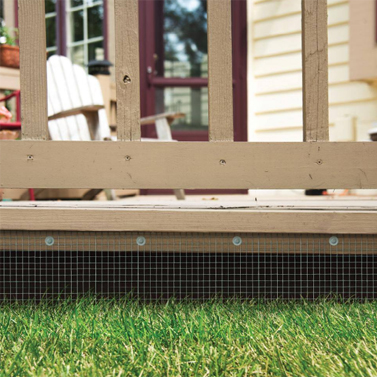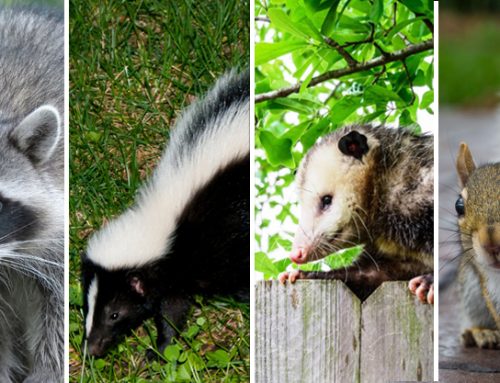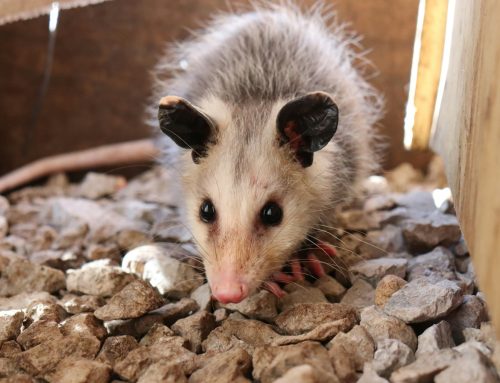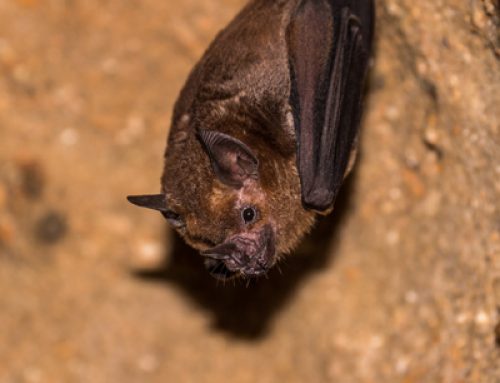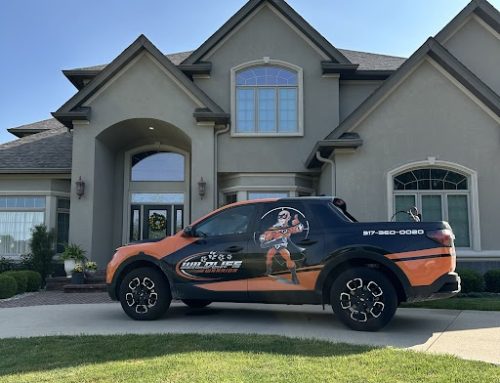Wild animals don’t need much space to get into your home and once inside, they can cause damage, leave droppings, and create noise. The best way to stop this is to seal every possible gap and entry point. This isn’t a quick fix. It’s a long-term solution that, when done right, is an effective form of wildlife exclusion out year after year.

How and Why Wildlife Finds a Way In
Animals are simply looking for the same things as we are: warmth, food, and shelter. Your attic, crawl space, or basement offers all three. Even the smallest opening is an invitation. Rodents, bats, birds, and raccoons are persistent. If they find a gap, they’ll use it.
If they can’t find one, they’ll make it themselves. That’s why patching holes after an animal gets in isn’t enough. You need to look at your entire home and seal every weak spot.
The Real Risks of Ignoring Gaps
Leaving gaps open isn’t just a nuisance. Animals bring in dirt, parasites, and disease. They chew wires, shred insulation, and damage wood. Over time, this can mean expensive repairs and health risks for your family. Some animals can even become aggressive if they feel trapped, especially when they recently just gave birth and are protective of their young. Sealing gaps is the most direct way to avoid these problems.
Where Animals Get In: Common Entry Points
You might think your home is sealed, but animals are experts at finding weak spots. Here’s where they usually get in:
- Roof edges and soffits: Animals climb trees or drainpipes and slip into gaps under shingles or eaves.
- Vents and chimneys: These are open doors unless covered with screens or caps.
- Gaps around pipes and cables: Utility lines often leave small holes that aren’t sealed tightly.
- Foundation cracks: Even tiny cracks can be widened by persistent animals.
- Attic vents and louvers: Birds and bats love these spots.
- Gaps under doors or garage doors: Rodents can slip through surprisingly small spaces.
Each of these spots needs special attention. Don’t just look at eye level. Get a ladder and check your roofline, crawl under your porch, and look behind bushes for animal entry points.
Materials That Actually Work
Not all materials are equal when it comes to keeping animals out. Some animals can chew through foam, wood, or plastic. You need to use strong, proven materials that stand up to weather and animal teeth.
- Caulk: Good for sealing small cracks around windows, doors, and siding. Use weather-resistant caulk so it lasts.
- Metal flashing: Perfect for rooflines, corners, and other high-risk spots. Animals can’t chew through it.
- Hardware cloth or metal mesh: Use this for vents, chimneys, and larger gaps. Make sure the mesh is small enough to keep out even tiny rodents.
- Concrete: For large gaps at ground level, concrete creates a permanent barrier.
- Steel wool: Stuff this into small holes before covering with caulk or foam. Rodents can’t chew through steel wool.
- Expanding foam: Fills odd-shaped gaps, but always cover with metal or another hard material so animals can’t chew through.
Choosing the right material for each spot is key. For example, don’t use foam alone in areas where rats or squirrels are active-they’ll chew right through it. Always reinforce soft materials with something tougher.
The Process: Step-by-Step Wildlife Exclusion
Sealing your home isn’t a one-day job. It takes a careful process to do it right. Here’s what it looks like:
- Inspection – Start by walking around your home. Look for any hole, crack, or gap bigger than a quarter inch. Check at ground level, up high, and everywhere in between. Use a flashlight to look into dark corners and behind bushes.
- Identify Active Entry Points – Look for signs of animal activity-droppings, greasy marks, chewed wood, or nesting material. These spots need urgent attention.
- Remove Wildlife First – If animals are already inside, you need to get them out before you seal anything. Trapping and humane removal are the safest ways. Never seal an animal inside-this can cause more damage and suffering.
- Seal Every Gap – Use the right material for each spot. Apply caulk smoothly along seams. Attach metal flashing with screws or nails. Cover vents with hardware cloth, and make sure it’s secured tightly.
- Double-Check and Monitor – After sealing, keep an eye out for new activity. Sometimes animals will try to find a new way in. Check your work after a few weeks and make repairs if needed.
Long-Term Benefits of Sealing Gaps
Once your home is sealed, you get peace of mind. No more scratching in the attic, droppings in the basement, or chewed wires. You also save money on repairs and avoid the health risks that come with animal intrusions. Sealing gaps isn’t just a one-time fix, it’s a long-term investment in your home’s safety and comfort.
Keeping Your Home Wildlife-Free Year After Year
Wildlife exclusion isn’t a set-it-and-forget-it job. Over time, weather, age, and animal activity can create new gaps. Make it a habit to inspect your home every spring and fall. Trim tree branches away from your roof, keep bushes back from your siding, and check for new cracks after storms. Staying vigilant and working with a wildlife expert is the best way to keep wildlife out for good.
Remember, keeping wildlife out by sealing them is about taking the time to find every weak spot, using the right materials, and making sure animals have no way in.

